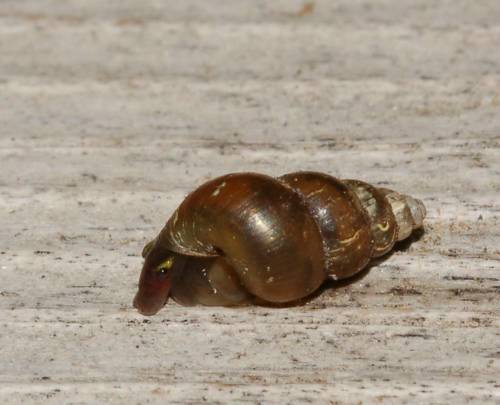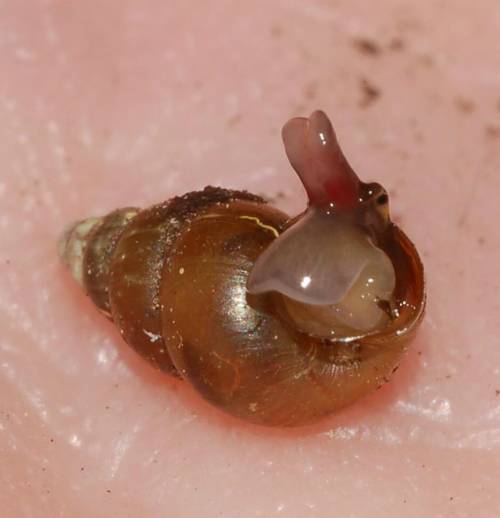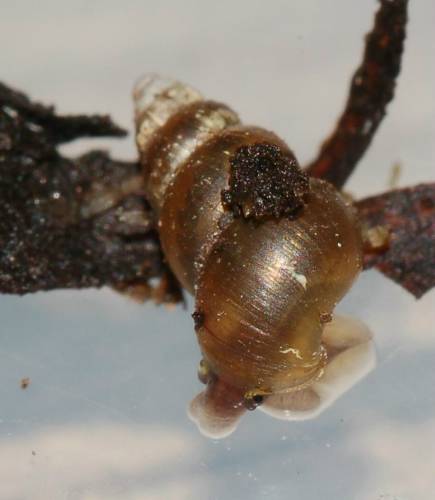|
The
Poweshiek Skipper Project
Terrestrial Snails |
|||||
|
Pomatiopsis lapidaria (Say, 1817) Slender Walker |
||||||
|
This snail is distinctly different from most of Iowa's terrestrial snails. This is an operculate snail--meaning it has a small flap made of material similar to the shell which covers the aperture of the shell when the snail withdraws into it. Notice that the eyes are not at the tips of the first pair of tentacles, either. In fact, this snail has very short fat tentacles which almost look like eyebrows and the eyes are at the base of them.
|

|
|||||
|
An argument could be made that this is an aquatic snail and not a terrestrial snail--in fact it is on the aquatic snail list for Iowa. It does inhabit terrestrial habitats as well, however. Two famous malacologists, Iowa's Bohumil Shimek and Illinois' Frank Collins Baker had an argument about whether it was or was not terrestrial (according to Aydin Írstan at Snails Tales). I don't think the argument is settled, but I'm going with the Iowa guy and calling it a land snail. I found this individual in a hillside seep at Whiterock Conservancy (near Coon Rapids, Iowa) during a bioblitz that they had there. |

|
|||||

|
We live in a highly modified environment and have a tendency to think that there is a great difference between dry ground and wetlands. There are a few areas here in Iowa where one can experience what prairie pothole wetlands, seeps, and fens are like without the influence of man. And because I wouldn't have known a few years ago, I will attempt to describe this particular area to you. The seep follows the contour of the hillside maybe 40 feet or so. If you get in the middle of it, there are sort of mounds--tussocks--in the soil that stand from six inches to a foot and a half tall. The tops of the tussocks are dry and the bases are wet. There are usually some neat-looking mosses on them as well as some wetland plants like marsh marigold and sensitive fern .In Iowa we did not just drain wetlands and convert prairies to farms. We drained some pretty large lakes, also. Lakes that were shallow, but were several miles across. And the ground between the lakes held a great deal of water, much like a sponge. |
|||||
|
|
The consequence of our actions is that we have more severe floods than they had in the past and we also have more severe droughts. Anyway, the photo to the right shows some of the habitat where this snail was found. It was on the top of a tussock--the "dry ground" part, but the soil in that area is still quite wet. |
|
||||